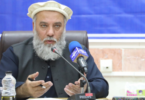Monitoring Desk
KABUL: After 17 years of war and conflict in Afghanistan it seems that the time has arrived where the international community, Afghan government and the Taliban might finally achieve a peace deal. The Afghan community is polarized with regard to the current mechanism for reaching a peace deal between the Afghan government and the Taliban, but apart from political debates, a peace deal will have profound implications for the health system and healthcare consumers in Afghanistan.
The civil war of the 90s was followed by serious neglect of the health system, both from national and international agencies. One of the major negative consequences was the brain drain in the health sector of the country. After 2002, with the intervention of the international community, numerous steps were taken to improve healthcare services, capacity building and infrastructure in the healthcare sector and maintain accessible healthcare services in urban and rural areas of the country.
According to the reports at the time, Afghanistan had one of the lowest life expectancy rates in the world, lack of access to basic health services and serious shortages of female healthcare workers. Fewer and fewer women were able to seek healthcare services and the services they received were of poor quality. Now with the support of the Afghan government, donors, and stakeholders, Afghanistan has had considerable success in the healthcare sector. Health indicators have improved to some extent, particularly in urban areas of the country. For instance, under-5 mortality has declined significantly, maternal mortality rate has dropped, and overall life expectancy has increased. Further, the quality of healthcare and the capacity of health personnel have improved. The role and contribution of both male and female health workers lies in the center of these accomplishments.
However, the health system and healthcare delivery remain fragile and inefficient in remote and conflict affected areas of the country. Health disparities and barriers to access healthcare services are well-noticed among government controlled and in conflict affected areas. The demand for healthcare services is high, but they are rarely met. In the case of polio, a disease that has been eradicated from the rest of the world, Afghanistan still has had the highest number of cases of polio for the last three consecutive years. Thousands of children remain unvaccinated due to insecurity in locations where the campaigns are conducted. This situation not only poses a challenge to the health sector of Afghanistan on the national level, it also represents a nightmare for the international community.
In some circumstances, the tensions between the Afghan government and the Taliban result in a total shutdown of health services in the area, such as in the province of Urozgan in 2017. Sometimes the tensions cause a complete suspension of health-related activities by international organizations like the International Committee of the Red Cross, and World Health Organization. Both have recently suspended their activities in the country following the threat of the Taliban.
Damages to the health facilities and human resources are always the major concern and it leads to the poor performance of health-related activities in the area. Most districts in the south where the conflict is present in its endemic form lack an organized healthcare system. Health professionals are often afraid to serve people who are residing in conflict-affected areas.
There is a high ambition for reaching a peace deal that will provide the health system an opportunity to grow and expand. A primary reason for optimism for peace Afghanistan would be to ensure the safety of health personnel’s, securing health facilities, improved monitoring of health-related activities, and allowing health-related NGOs to deliver healthcare services without any ban or hurdle in rural areas of the country where population have been deprived of quality healthcare services and are in immediate need. Areas that face health disparities due to conflict would receive more attention, and the population that has been neglected in their basic health rights would be able to enjoy healthcare services in health facilities close by.
The promise for lasting success during this fragile but hope-filled moment lies with the commitment of the international community and government of Afghanistan to appreciate the contribution of non-governmental organizations and healthcare workers and to protect their work, particularly female healthcare workers. The rights of all health care workers must be secured in peace talks and in any peace agreement. The Universal Declaration of Human Rights of 1948 recognizes health as part of the right to an adequate standard of living, and the International Covenant on Economic, Social and Cultural Rights of 1966, and the Constitution of the World Health Organization recognize access to healthcare as a fundamental and inalienable human right. It must be enshrined in the peace deal, as well.
A peace deal that results in the limitation of women’s access to healthcare services, or that limits the contribution of female health workers to the health system, risks losing the current health gains and threatens to reverse the improvement of health indicators in the country. (Khaama Press)






